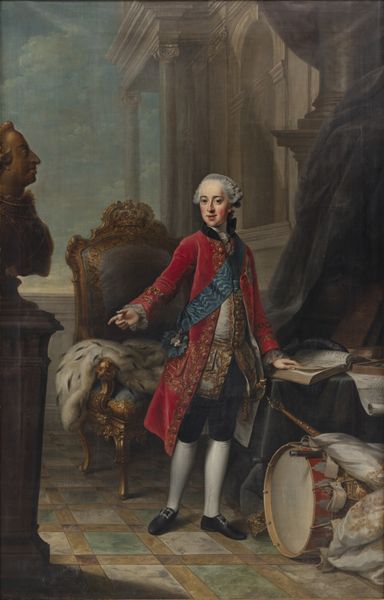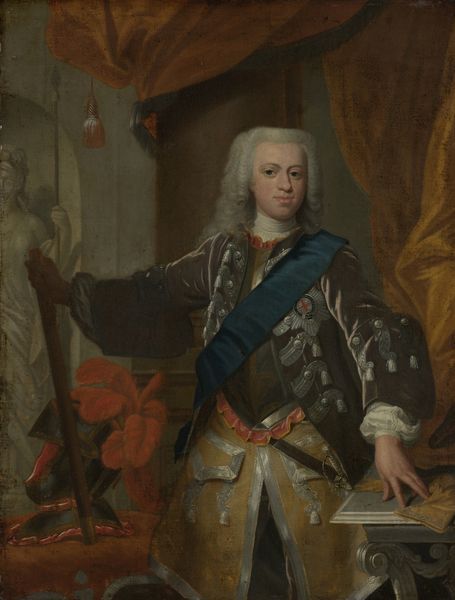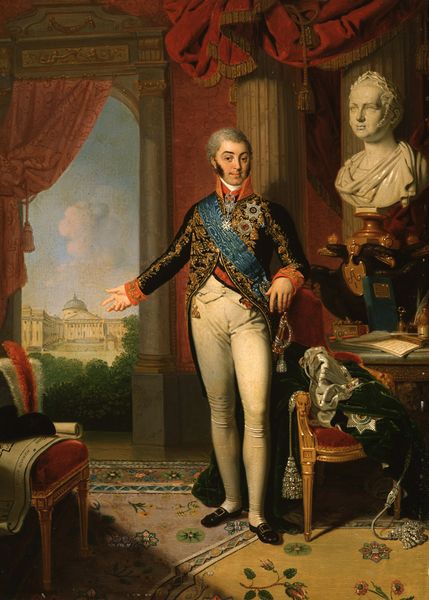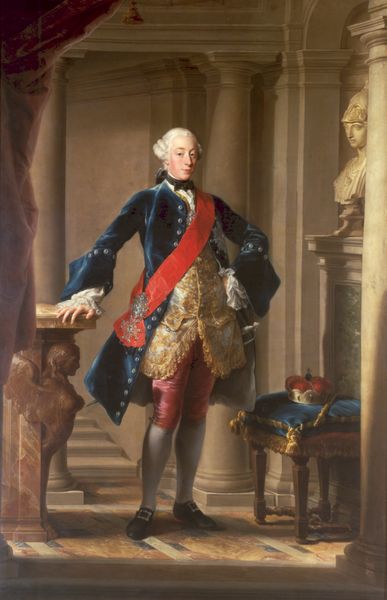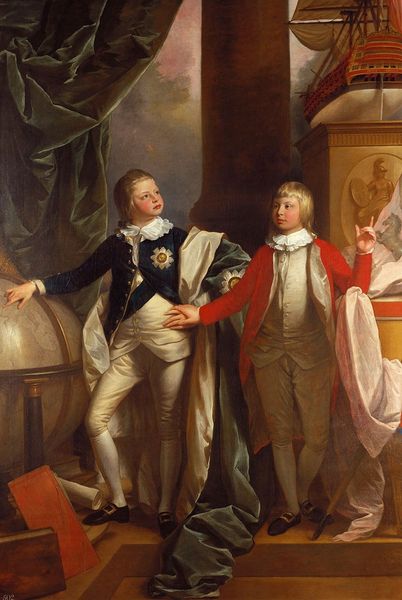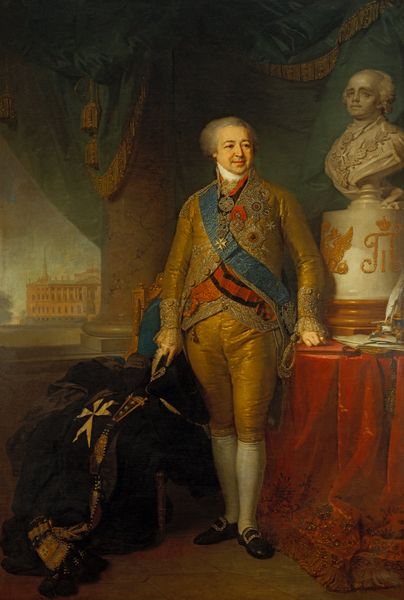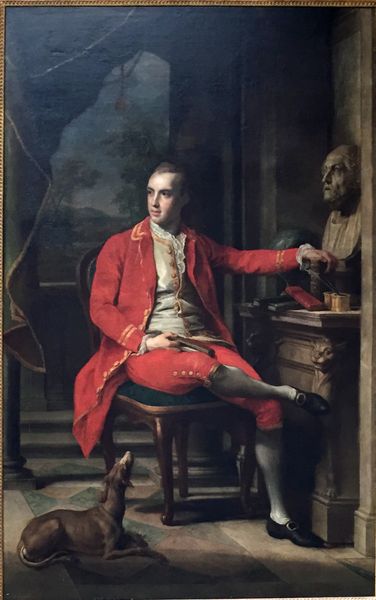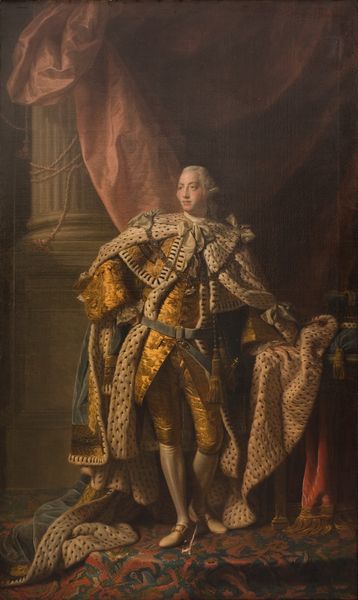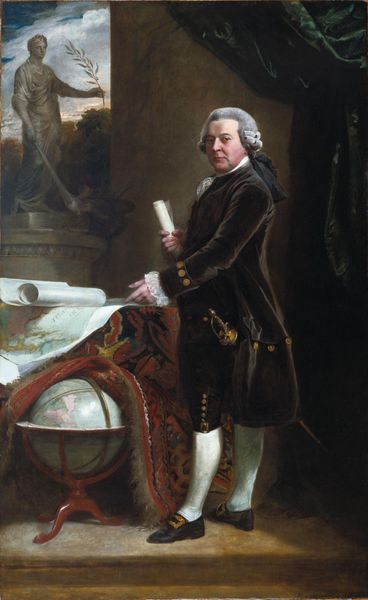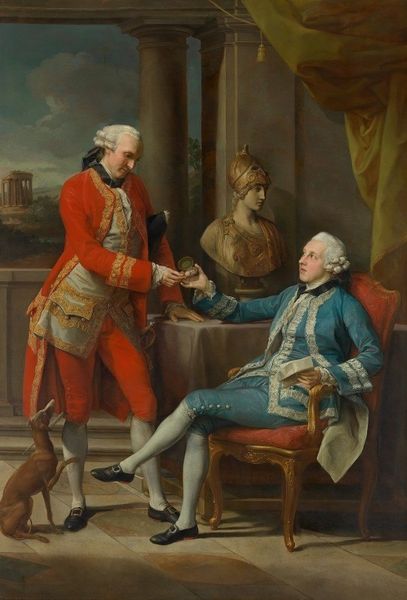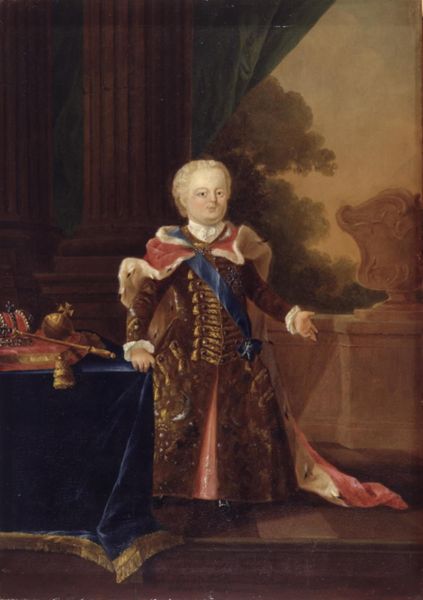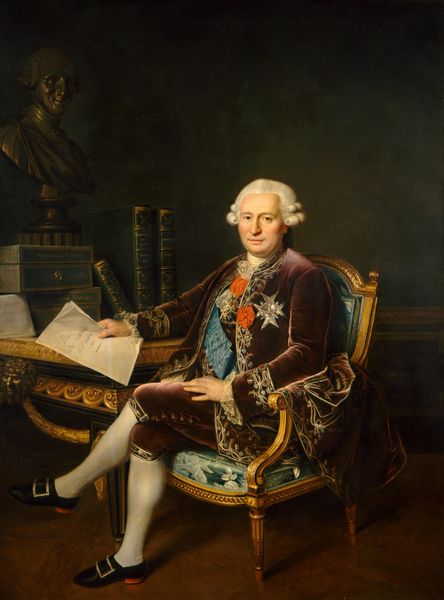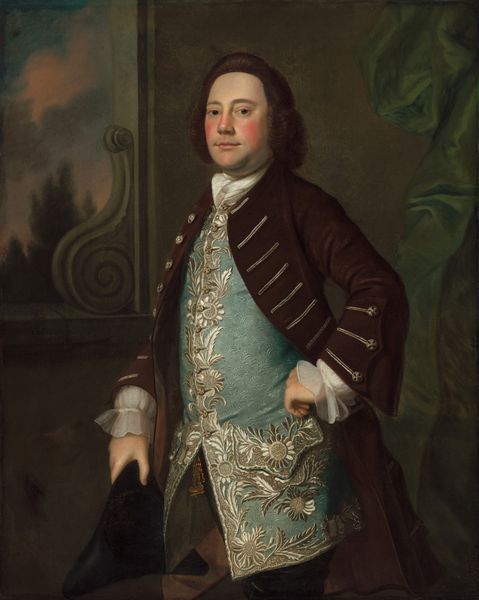
Portrait of John, Lord Mountstuart, Later 4th Earl and 1st Marquess of Bute 1763
0:00
0:00
gouache
#
portrait
#
gouache
#
gouache
#
oil painting
#
genre-painting
#
watercolor
#
rococo
Copyright: Public domain
Curator: This is Jean-Etienne Liotard’s “Portrait of John, Lord Mountstuart, Later 4th Earl and 1st Marquess of Bute,” created around 1763. What do you notice about it? Editor: It's elegant, bordering on languid. The pose, the soft pastel palette… it speaks to a life of considerable leisure. Curator: Absolutely. And the way Liotard has rendered this image in gouache is quite telling. Consider the labor involved—building up these layers, achieving that smooth finish, simulating the luxurious fabric of the suit. It's all carefully crafted. Editor: Speaking of the suit, the almost artificial blue seems to indicate something about John’s position within society and the importance of presentation at this time, wouldn’t you agree? I mean, Liotard paints him leaning against a fireplace, an ornate folding screen just barely visible behind him. Curator: Precisely. Context is everything. Think of the House of Bute’s growing influence throughout the 18th century. Depicting Lord Mountstuart in this way, emphasizing his refinement and status, underscores the family's power and the visual language of aristocracy. Editor: Yet, there's also something slightly detached about him. Almost like he is on display in an art gallery, being perceived and dissected. His reflection reinforces that self-awareness, doesn't it? The gaze looking towards something beyond. What sort of public role might he imagine for himself? Curator: He seems to be gazing toward some type of promise and aspiration, you’re spot on. But the material cost to get there must be monumental, to fund such finery… Think about where all the raw pigment may have originated. Liotard doesn't paint such economic considerations into the portrait, instead we must recognize it as almost symbolic. Editor: It also gives an illusion to intimacy. The Rococo style always feels more like theatre, but the medium pushes towards the personable. Very strange blend, truly fascinating to observe from today's standards. Curator: It certainly challenges modern eyes! Understanding its place within the visual landscape of 18th-century portraiture allows us to question what we value—both materially and historically. Editor: Agreed. Ultimately, Liotard's piece offers a potent glimpse into the constructed identity of the elite and invites reflection on the historical, economical, and material factors that influenced both its creation and its reception.
Comments
No comments
Be the first to comment and join the conversation on the ultimate creative platform.
